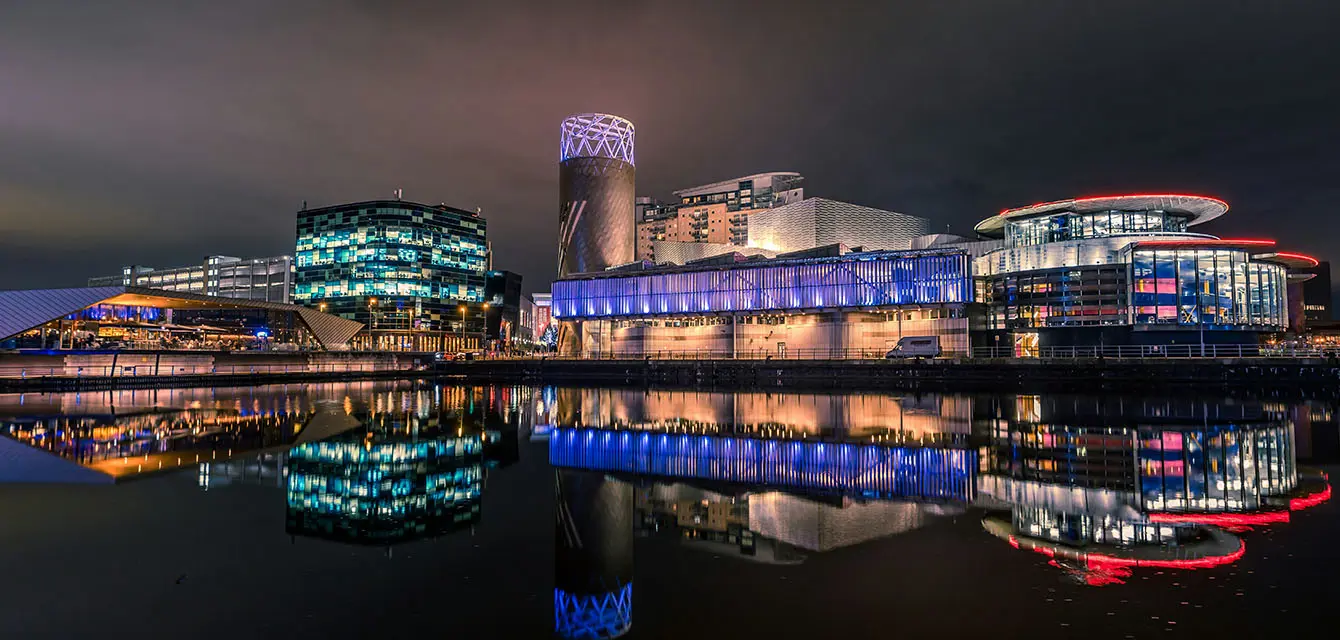It was in the news recently that The Lowry, a renowned theatre and art gallery in Salford Quays and the North West’s most visited attraction, was applying for around £10m in funding for ‘critical upgrades’ needed to prevent closure
. This is indicative of a wider trend, with the chair of Arts Council England telling the Guardian earlier this year that arts and cultural centres across England are at a “tipping point”, with many facing closure or restricted operations without continued public investment
.
The Lowry is a Millenium Commission project which opened in 2000. Established to celebrate the turn of the millennium, the Commission used National Lottery funding to support investment into buildings such as the Lowry, but also environmental projects, celebrations and community schemes. It invested over £2 billion into around 200 projects between 1993 and 2006, ranging from community greening initiatives and Village Hall improvements all the way though to flagship projects such as The Millenium Bridge and Dome (since repurposed as the O2 Arena).
Arguably, the Commission’s longest-lasting impact was in enabling the construction of a host of new, cutting-edge cultural and educational projects up and down the Country. Alongside the Lowry, notable examples include: The Tate Modern, The Eden Project, Science Centres in Glasgow, Dundee and Winchester, The Deep aquarium in Hull, Cardiff’s Millennium Stadium and Centre, and The Glasshouse International Centre for Music in Gateshead (formerly SAGE Gateshead).
Many were also designed to be of architectural as well as cultural significance, with the Lowry mirroring Bilbao’s Guggenheim; The Glasshouse’s acoustics-focussed shell casting an imposing image over the Tyne; and others, such as the Glasgow Science Centre’s titanium-clad buildings, featuring cutting-edge materials.
Overall, the Commission sparked an unprecedented period of investment into the UK’s cultural infrastructure, in full recognition of the enormous impact these types of facilities can have. However, 25 years on, the challenges of operating and maintaining these state-of-the-art facilities is becoming apparent.
In many cases, their internal infrastructure remains unchanged and in need of an upgrade, whilst bespoke building materials like glass and titanium are expensive to maintain and replace. Similarly, whilst the buildings can look futuristic, their green credentials are often below today’s standards, meaning huge utilities bills to heat the expansive spaces and an uphill battle to improve sustainability. Some famous instances of closed millennium projects include the National Centre for Popular Music in Sheffield which closed after just one year in 2000, the Urbis museum in Manchester which closed in 2010, and West Bromwich’s ill-fated arts facility The Public which closed in 2013.
These issues explain why so many of these organisations are now having to strive to demonstrate their ongoing worth - both in financial and cultural terms - at a time when regeneration funding pots are shrinking and pressures on the public finances have arguably never been greater.
Lichfields has recently worked with both
The Lowry and
The Glasshouse to help them quantify their economic and social contributions. We found that both organisations and those like them generate very significant levels of economic activity, enrich the UK’s cultural fabric and the lives of their local communities, develop the skills of the next generation of talent, and act as the beating cultural heart of the wider regeneration projects they sit within. For example, we found that the Lowry delivers around £48 million in GVA annually and attracted 860,000 visitors to the North West in 2023/24, whilst The Glasshouse has delivered over 233,000 learning sessions and supported over 2.8 million attendances to educational programmes since opening.
Importantly, they represent outstanding value for money when it comes to public funding, offering very significant return on investment.
Research by CEBR found that in 2023, the average return on investment of Arts Council England National Portfolio Organisations was £3.12 in direct GVA for every £1 of public funding received
. On top of this, Department for Digital, Cultural, Media and Sport [DCMS] research estimates that that for every £1 in direct GVA generated by the sector, £2.17 in GVA is created nationally through supply-chain effects
.
Whilst the economic contributions of these types of organisations are considerable, it is their wider and harder to quantify impacts which cannot be understated, such as their educational outputs and the support provided to local vulnerable communities and young people. There is some recognition of this from Government, with departments such as DCMS working to provide new ways for cultural organisations to demonstrate their value. The Chancellor Rachel Reeves announced that the Government was updating the Green Book business case guidance in January 2025, based on findings of the review published by HM Treasury in June 2025. The review acknowledges the need to better capture transformational impacts and ensure that decision-makers consider wider, less quantifiable benefits.
A new version of the Green Book is set to be released in early 2026. (See Lichfields’ recent Insight on business case best practice
here).
The Millenium Commission projects were developed as bold visions of the UK’s cultural potential, and like so many other organisations now form part of our rich legacy. It is vital that their economic, social and cultural value is fully recognised, and sufficient public and financial support provided to ensure this legacy is not lost.
Footnotes



